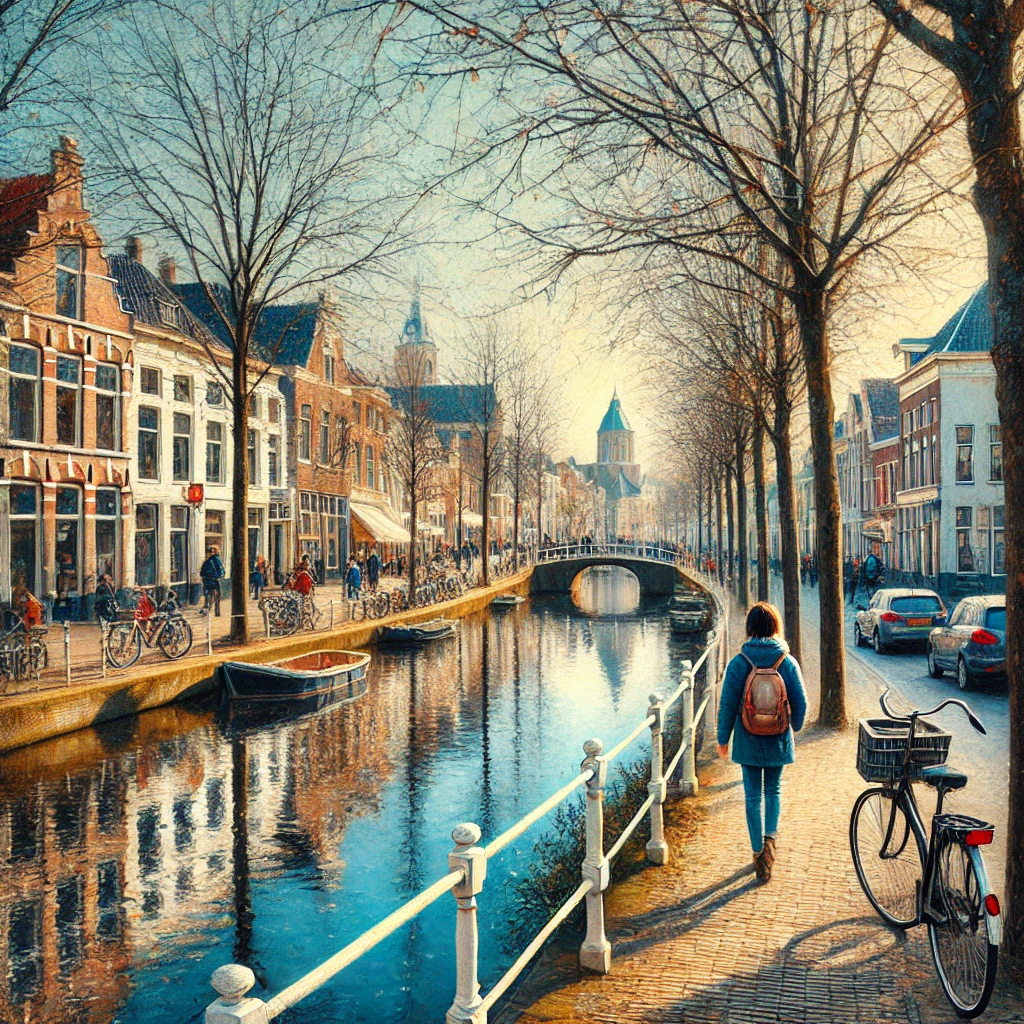ChatGPT:Delft is a charming city in the province of South Holland, The Netherlands, known for its historic architecture, canals, and cultural heritage. It is famous for its blue and white Delftware pottery, produced since the 17th century. The city boasts significant historical sites, such as the Nieuwe Kerk (New Church), where members of the Dutch royal family are buried, and the Oude Kerk (Old Church), known for its leaning tower. Delft is also home to the prestigious Delft University of Technology (TU Delft), which contributes to its vibrant, youthful atmosphere. The city’s picturesque canals, historic buildings, and bustling markets make it a popular destination for tourists and a pleasant place to live.
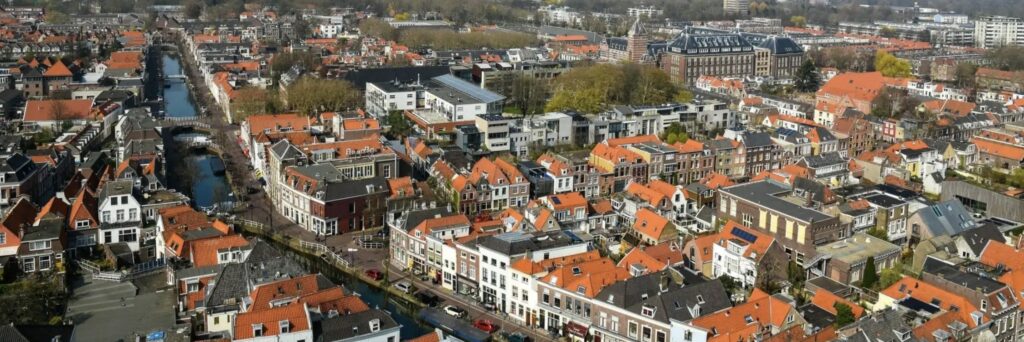
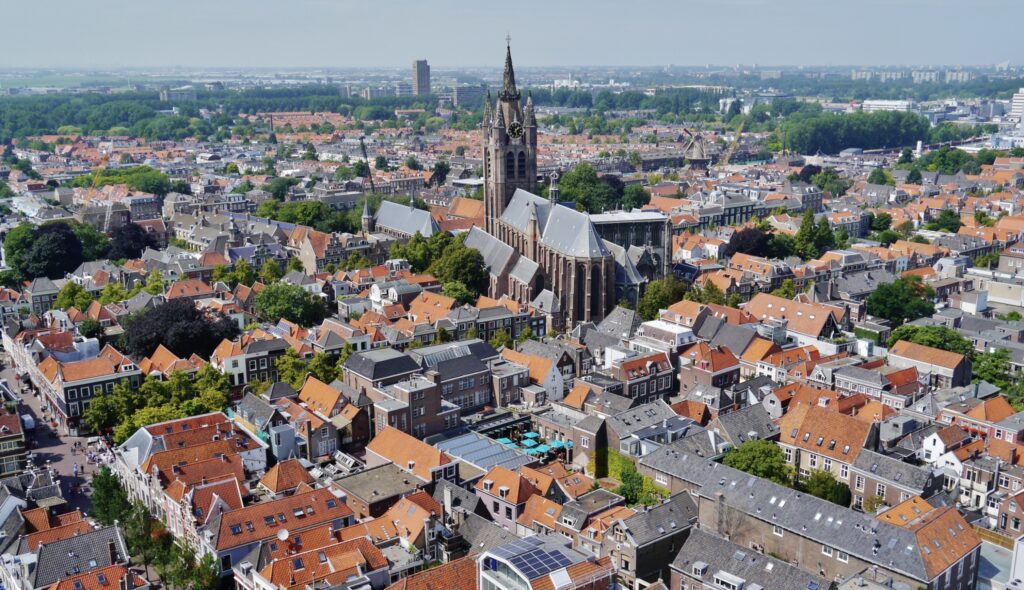
Delft has a rich history that dates back to the early Middle Ages. Its origins can be traced to around 1075 when it was mentioned in historical records as a small settlement known as “Delf,” derived from the word “delven,” meaning to dig, a reference to the digging of canals.
Origin and Early History
11th-13th Century: Delft began as a small community centered around the excavation of the canal, the “Delf,” which was essential for drainage and transport. By the 13th century, it had grown sufficiently in importance to receive city rights in 1246 from Count William II of Holland.
Medieval Period
14th-15th Century: During the medieval period, Delft flourished as a trade center, particularly for wool and cloth. Its strategic location and canal system contributed to its economic growth. The city also became known for its breweries, which were numerous during this period.
Renaissance and Golden Age
16th-17th Century: The 16th century was a tumultuous time for Delft, marked by the Dutch Revolt against Spanish rule. In 1572, Delft joined the rebellion and later became the residence of William of Orange, the leader of the Dutch revolt and considered the founding father of the Netherlands. His assassination in 1584 in Delft had a profound impact on the city.
The 17th century marked the Golden Age of Delft, particularly renowned for its production of Delftware, the iconic blue and white pottery that became famous worldwide. The city’s economy thrived on trade, and it was home to many artists, including the famous painter Johannes Vermeer.
Modern Era
18th-19th Century: The 18th century saw a decline in Delft’s economic prosperity due to competition from other cities and changes in trade routes. However, the 19th century brought industrialization, which revived the city’s fortunes. The establishment of the Delft University of Technology in 1842 also played a significant role in its development.
20th Century to Present
20th Century: Delft continued to grow and modernize, balancing its historical heritage with industrial and technological advancements. The presence of TU Delft attracted students and researchers, contributing to a vibrant academic and cultural life.
21st Century: Today, Delft is a blend of historical charm and modern innovation. It is a thriving city known for its preserved medieval architecture, bustling markets, and as a center of technological research and development. The city’s canals, churches, and museums attract tourists, while its educational institutions keep it at the forefront of technological progress.
Delft’s history is a testament to its resilience and ability to adapt to changing times while preserving its rich cultural heritage.
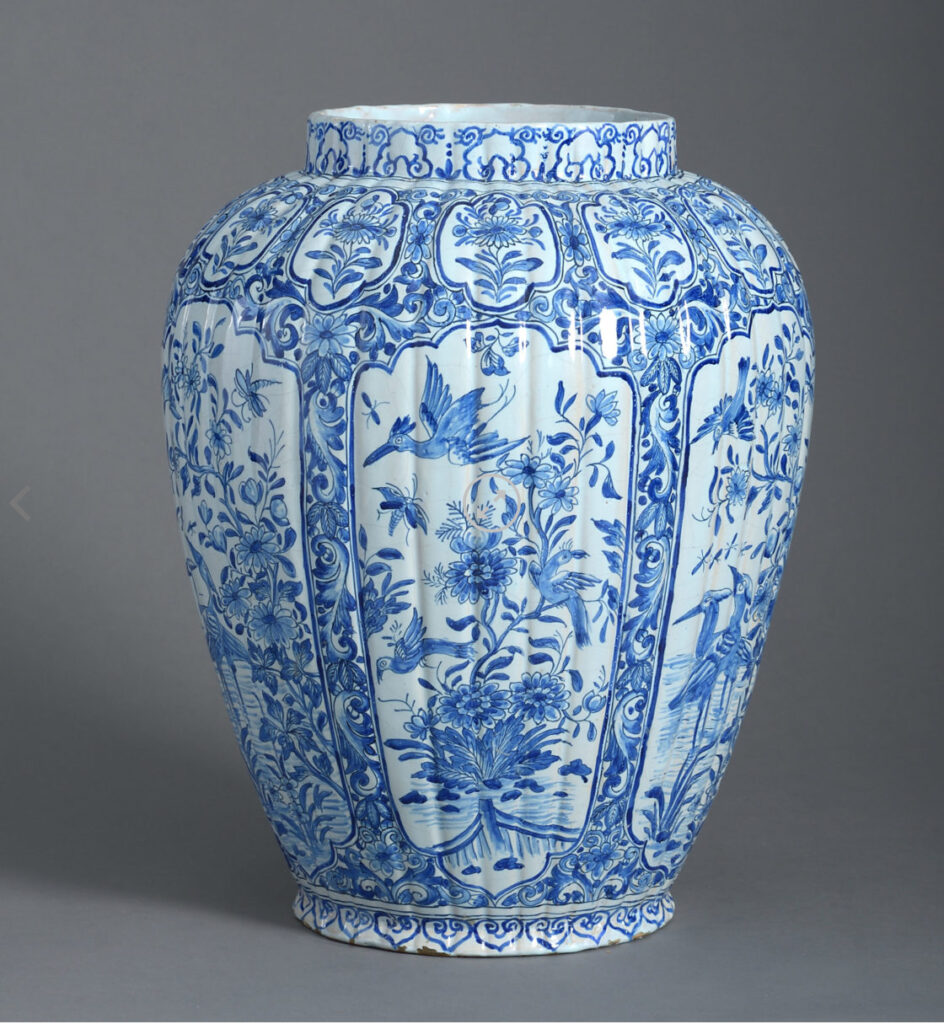
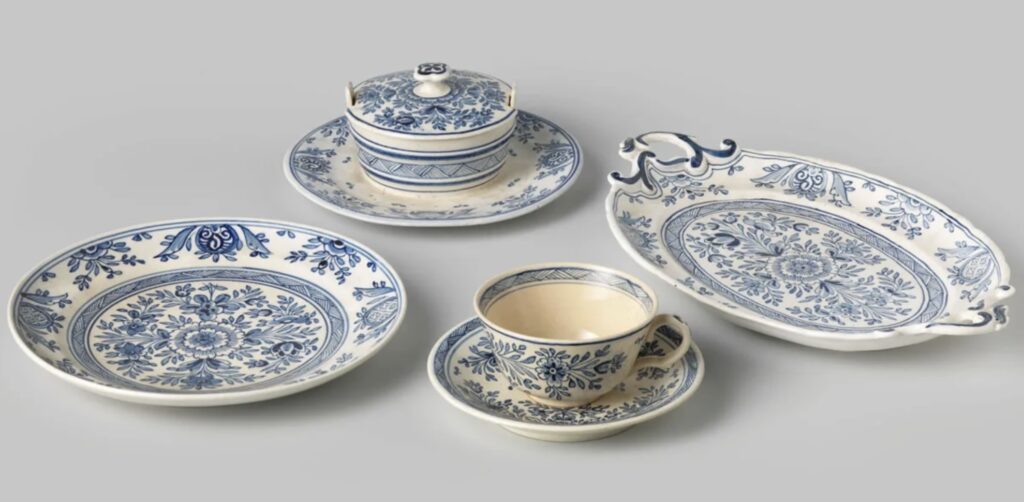
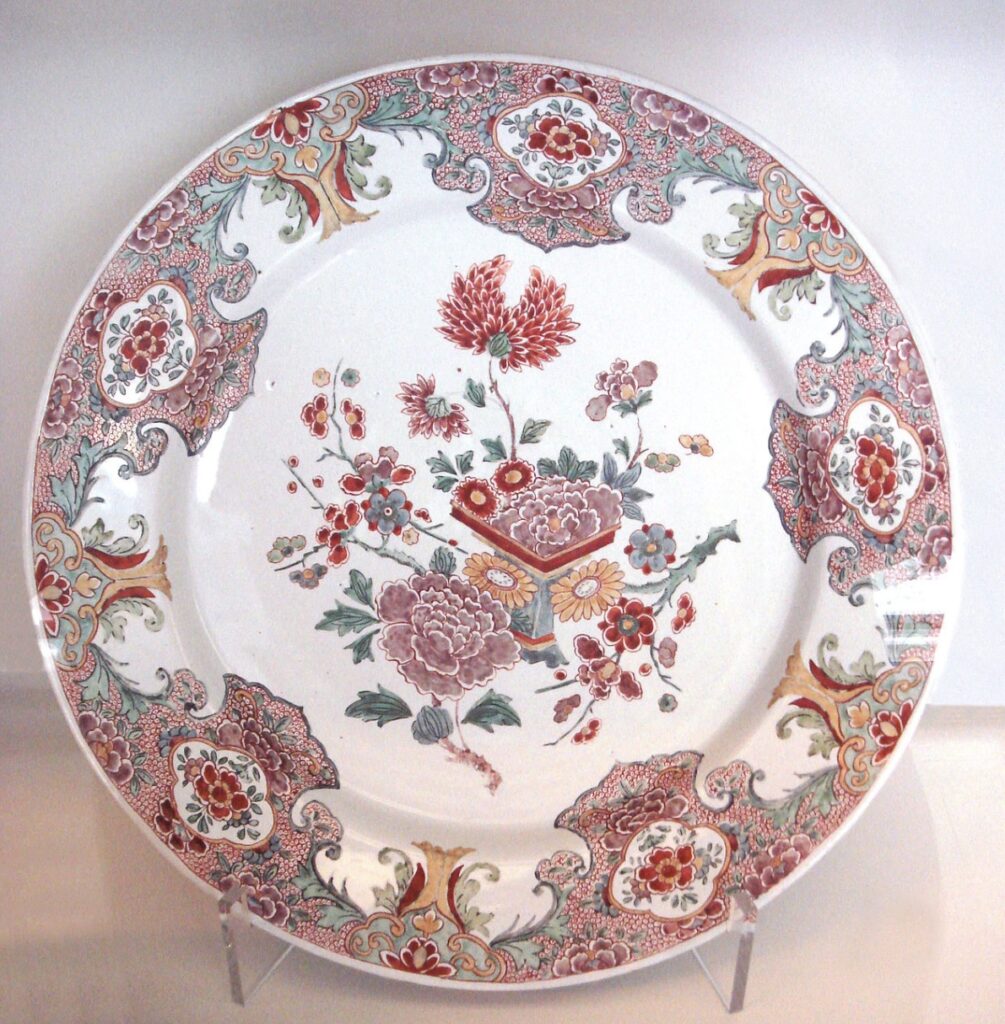
Johannes Vermeer’s painting “View of Delft” is one of the most celebrated works of Dutch Golden Age art. Painted around 1660-1661, this landscape painting is remarkable for its realistic depiction of the city of Delft. Here are key features of the painting:
Composition and Elements
- Sky and Clouds: The painting features a dramatic sky with billowing clouds that occupy a significant portion of the canvas, reflecting the Dutch painters’ fascination with the natural sky and light. The clouds are varied in color and shape, creating a dynamic background.
- Cityscape: The view is from the south of the city, with the Schie River in the foreground. The buildings are rendered with meticulous detail, showcasing the architectural beauty of Delft. Notable structures include the towers of the Nieuwe Kerk and the Oude Kerk, and the prominent city gate.
- Water and Reflections: The calm water of the river reflects the buildings and sky, adding depth and realism. Vermeer’s technique in depicting water and reflections demonstrates his mastery of light and perspective.
- Foreground Details: The foreground features small figures and boats, adding a sense of scale and daily life. These details help to ground the painting in reality and provide a glimpse into 17th-century life in Delft.
Light and Atmosphere
- Lighting: Vermeer’s use of light is exquisite, capturing the interplay of sunlight and shadow. The light appears soft and diffused, typical of a day with intermittent clouds, enhancing the three-dimensionality of the scene.
- Atmospheric Perspective: The painting employs atmospheric perspective, where colors become lighter and less distinct in the distance, creating an illusion of depth. This technique helps convey the vastness of the cityscape.
Artistic Techniques
- Color Palette: The color palette is dominated by earthy tones, blues, and greens, reflecting the natural colors of the city and its surroundings. Vermeer’s subtle use of color contributes to the painting’s serene and realistic atmosphere.
- Detail and Realism: Vermeer’s attention to detail is evident in the careful rendering of the brickwork, windows, and rooftops. The precision and clarity of these details exemplify his dedication to realism.
Significance
- Cultural and Historical: “View of Delft” is not just a cityscape but a historical document capturing the essence of Delft in the 17th century. It provides insight into the architectural and urban landscape of the time.
- Artistic Legacy: The painting has had a lasting impact on the perception of Delft, showcasing Vermeer’s ability to transform a simple city view into a masterpiece. It highlights his exceptional skill in rendering light, color, and atmosphere.
“View of Delft” is a masterpiece that encapsulates the beauty and tranquility of Delft, making it one of the most famous cityscapes in art history. Vermeer’s depiction has contributed significantly to the city’s international reputation.
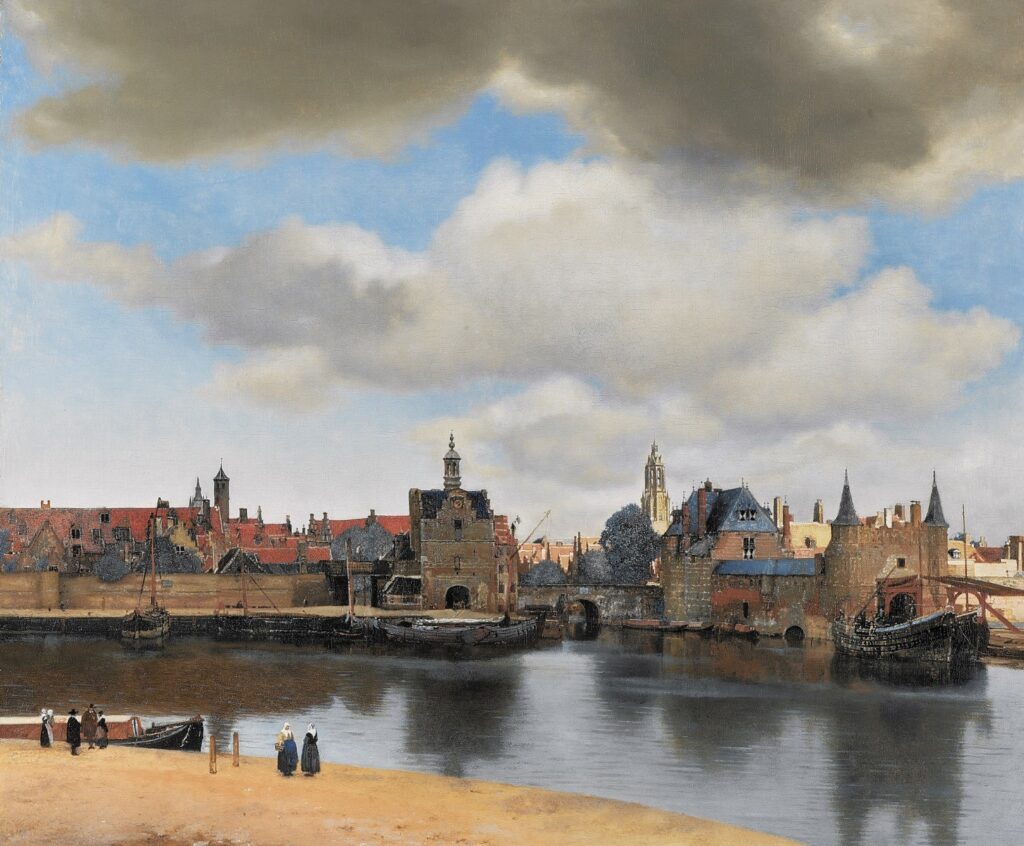
Delft is rich in historical monuments and tourist attractions that reflect its long and varied history. Here are some of the most notable ones:
Historical Monuments
- Nieuwe Kerk (New Church):
- A Gothic-style church built between the 14th and 16th centuries.
- Famous for the tomb of William of Orange and the Dutch royal family’s burial vaults.
- The church tower offers panoramic views of Delft and its surroundings.
- Oude Kerk (Old Church):
- Known for its leaning tower and beautiful stained-glass windows.
- Final resting place of the painter Johannes Vermeer and other notable figures.
- Prinsenhof:
- Formerly a convent, it became the residence of William of Orange.
- Now a museum showcasing the history of the Dutch Revolt and Delft’s history.
- Delft City Hall:
- A Renaissance-style building located on the Markt (market square).
- Notable for its ornate facade and historical significance as the city’s administrative center.
- Eastern Gate (Oostpoort):
- The only remaining city gate of Delft, dating back to the 15th century.
- A picturesque structure with two towers and a central archway, often featured in photographs and paintings.
Tourist Attractions
- Vermeer Centrum Delft:
- A museum dedicated to the life and works of Johannes Vermeer.
- Offers reproductions of his paintings and insights into his techniques and influence.
- Royal Delft (Koninklijke Porceleyne Fles):
- The last remaining factory of the original 17th-century Delftware producers.
- Visitors can tour the factory, see the production process, and view the extensive collection of Delft Blue pottery.
- Science Centre Delft:
- Part of Delft University of Technology, this interactive museum focuses on science and technology.
- Features hands-on exhibits and activities for all ages.
- Botanical Garden (TU Delft Botanic Garden):
- Founded in 1917, it covers nearly 2.5 hectares with a diverse collection of plants.
- Serves both as a research facility and a public garden.
- Museum Het Steen:
- Housed in a former city prison, this museum offers a look into the history of Delft’s criminal justice system.
- Beestenmarkt:
- A lively square known for its cafes and restaurants.
- Once a cattle market, it is now a popular spot for dining and socializing.
- Agnetapark:
- A historical garden village designed in the late 19th century for workers of the Gist and Spiritus factory.
- Known for its unique urban planning and architecture.
Additional Points of Interest
- Markt (Market Square): The central square of Delft, surrounded by historical buildings, shops, and cafes. It hosts a weekly market and various events throughout the year.
- Canals: Delft’s network of canals is a defining feature of the city. A canal tour provides a unique perspective on the city’s architecture and history.
Delft’s blend of historical monuments, cultural attractions, and scenic beauty makes it a fascinating destination for visitors.
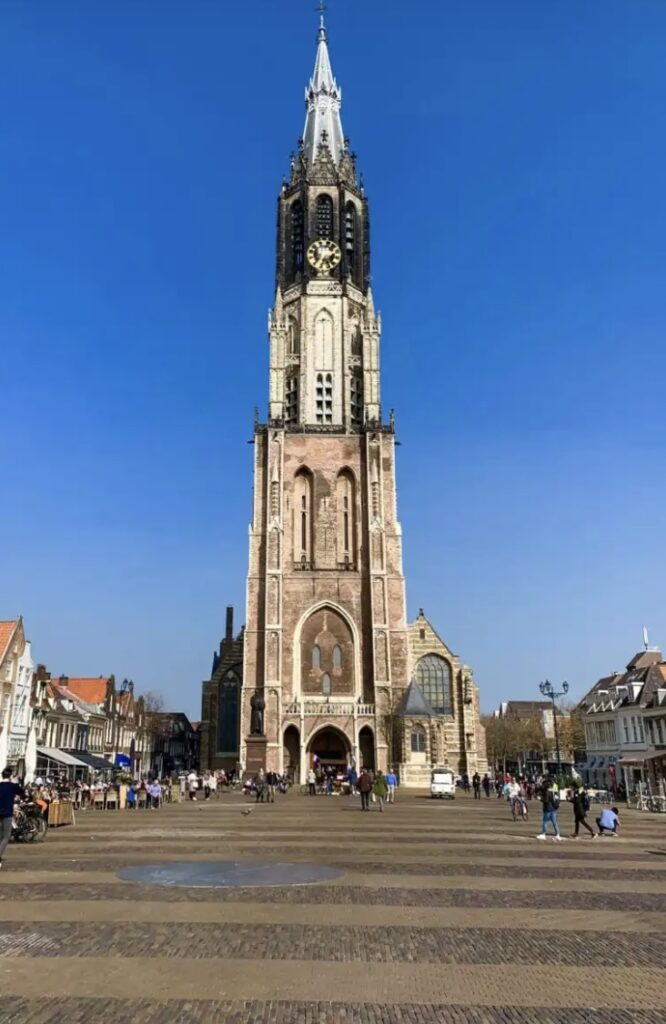
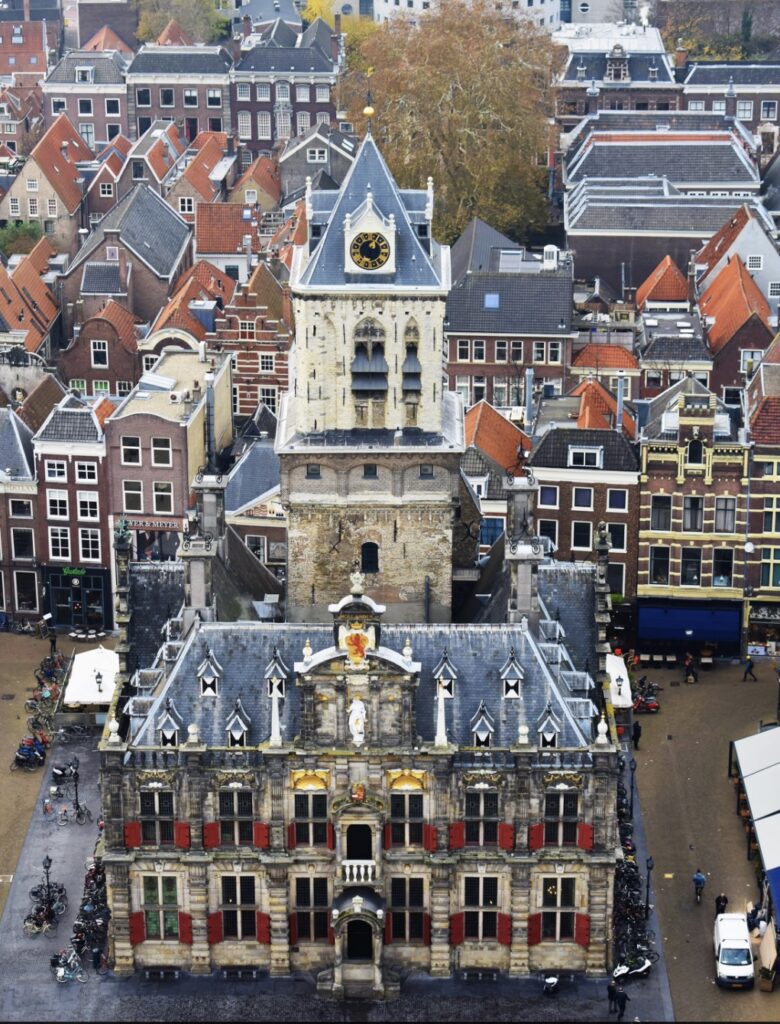
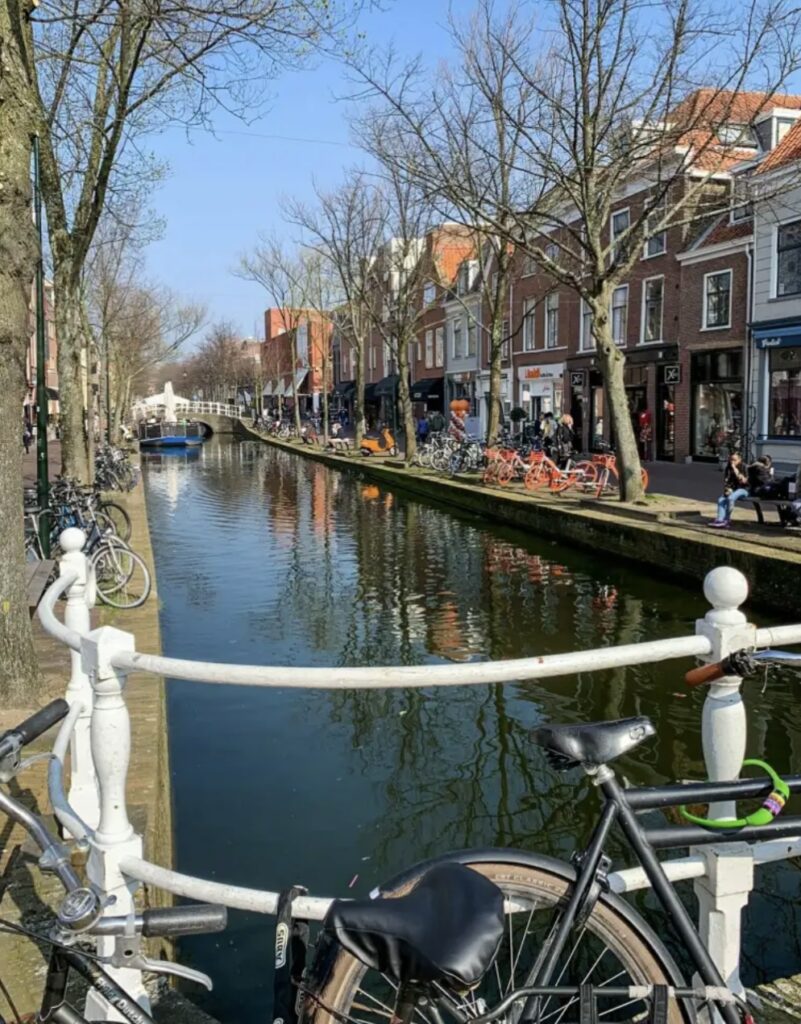
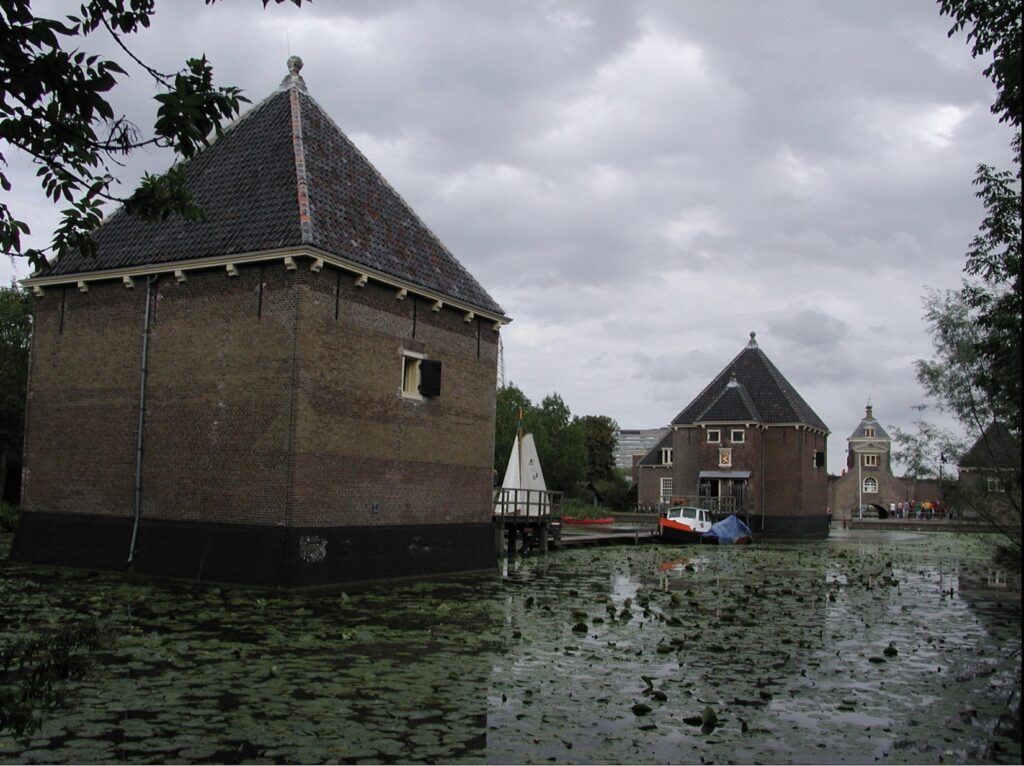
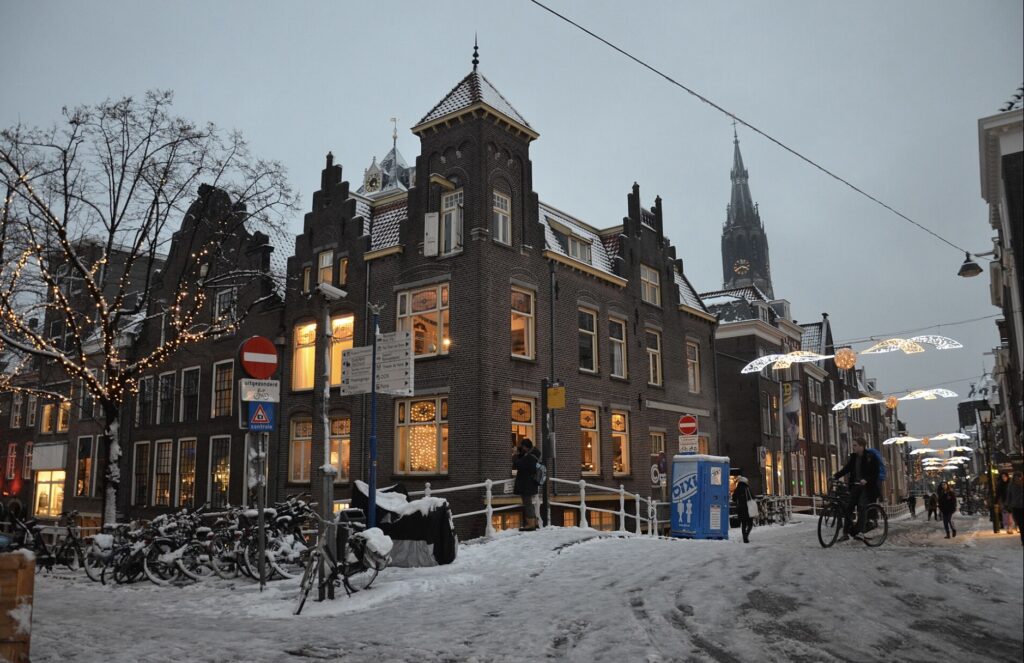
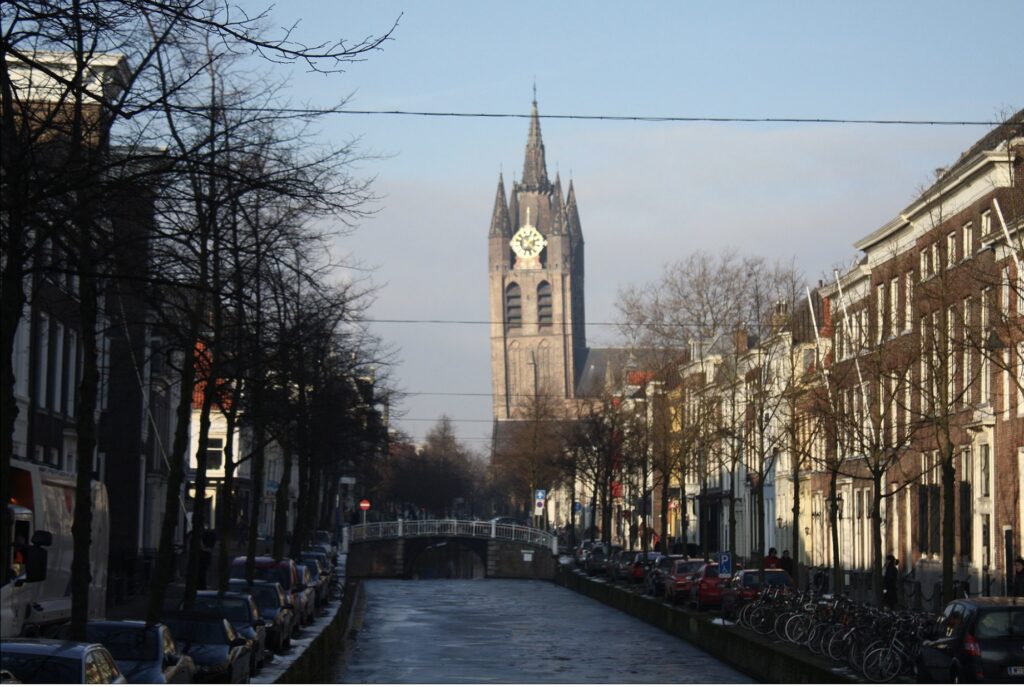
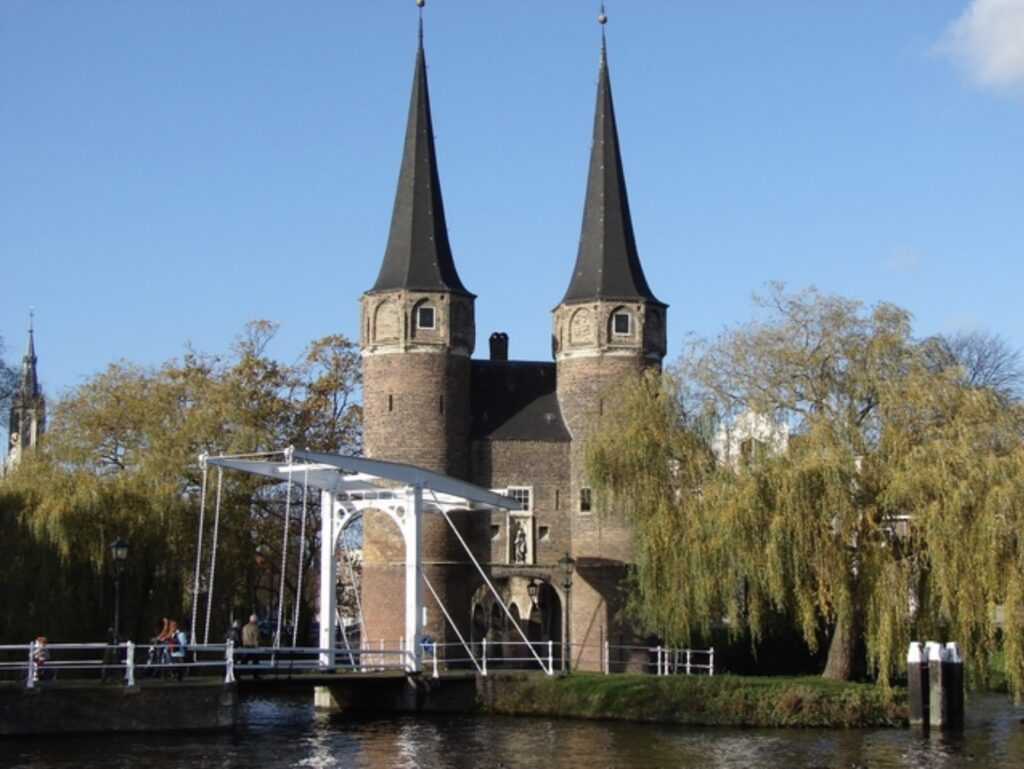
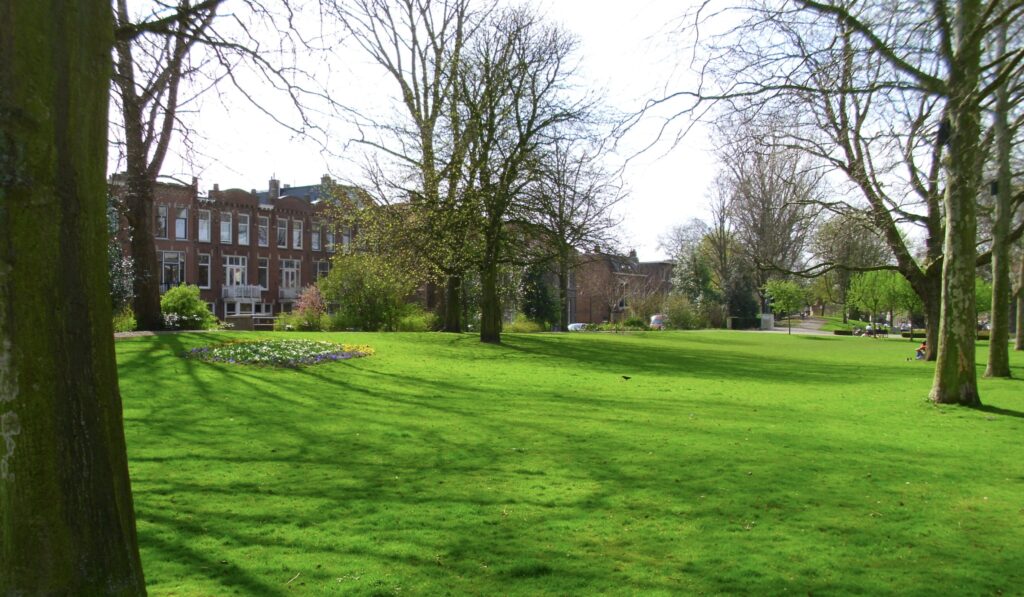
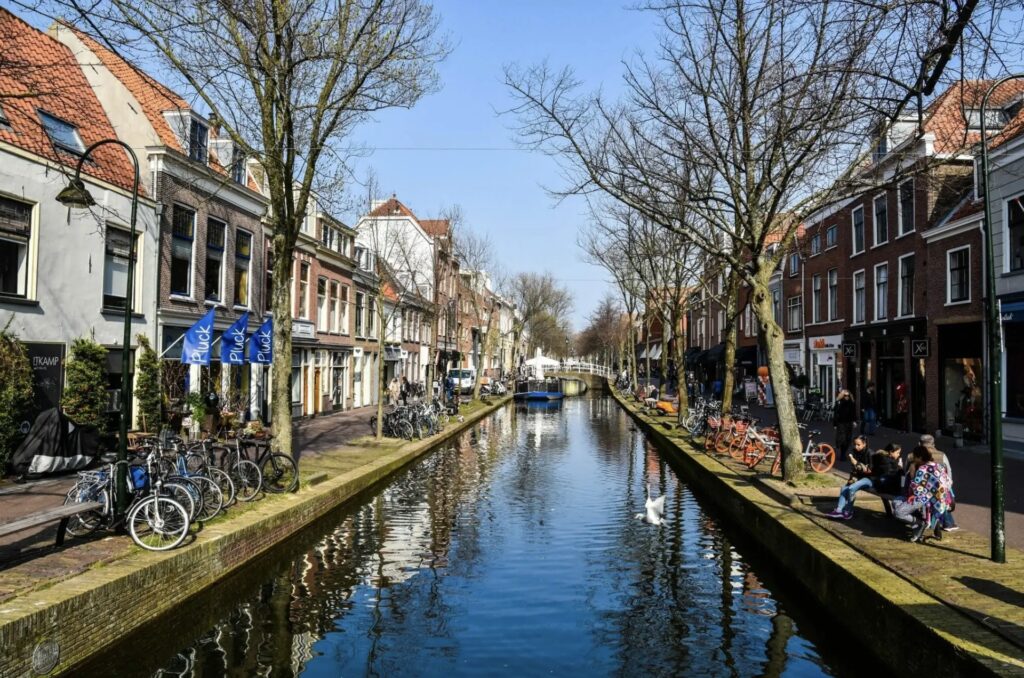
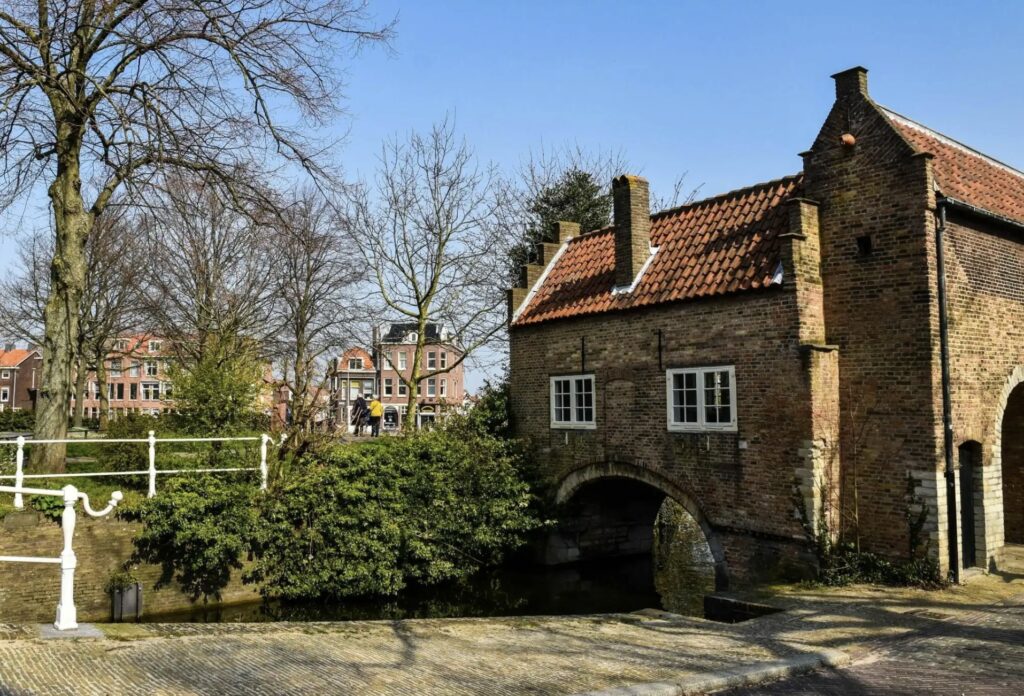
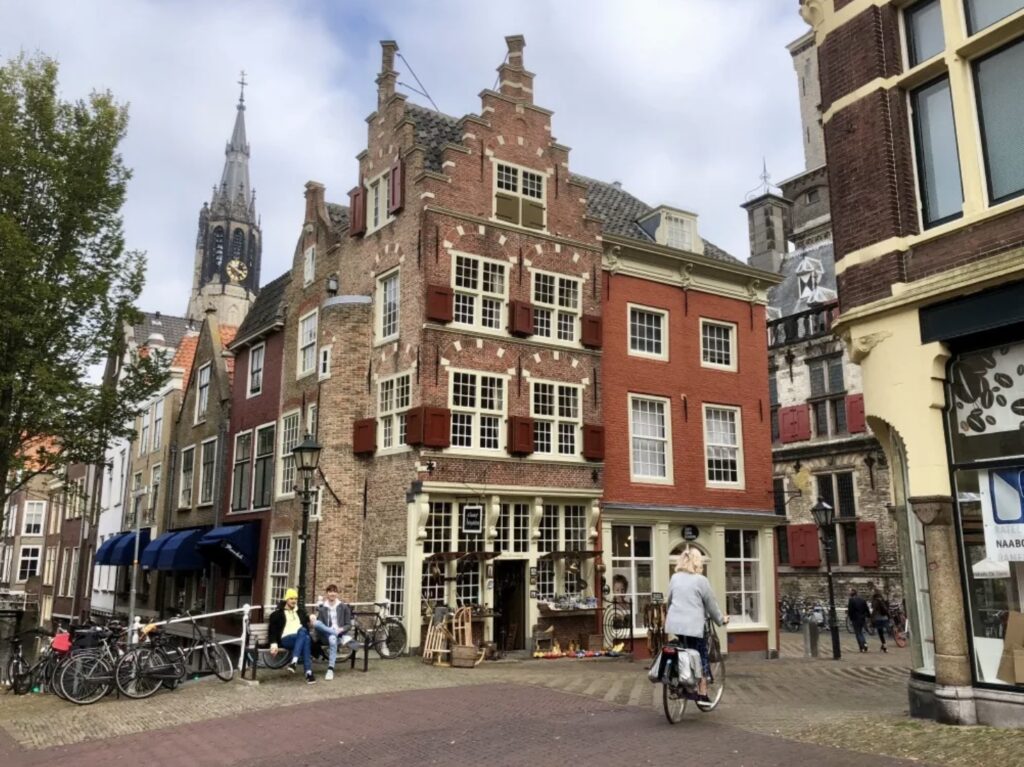
Here’s a one-day walking route to explore Delft, incorporating historical sites and local food specialties:
Morning
1. Start at Delft Central Station:
- Delft Central Station: A modern architectural landmark. Head towards the city center.
2. Walk to the Markt (Market Square):
- City Hall (Stadhuis): Admire the Renaissance-style architecture.
- Nieuwe Kerk (New Church): Visit the church and climb the tower for panoramic views.
Breakfast:
- De Lelie: A cozy café near the Markt, perfect for a traditional Dutch breakfast with coffee and pastries.
Mid-Morning
3. Head to the Vermeer Centrum Delft:
- Vermeer Centrum Delft: Learn about the life and works of Johannes Vermeer.
4. Stroll to the Oude Kerk (Old Church):
- Oude Kerk: Visit the church, known for its leaning tower and Vermeer’s tomb.
Lunch
5. Lunch at ‘t Postkantoor:
- ‘t Postkantoor: A charming restaurant housed in a historic post office building. Try a traditional Dutch dish like “bitterballen” or a “broodje haring” (herring sandwich).
Early Afternoon
6. Walk to Prinsenhof:
- Prinsenhof: Explore the museum dedicated to William of Orange and the Dutch Revolt.
7. Stroll along the canals to the Eastern Gate (Oostpoort):
- Eastern Gate: The only remaining city gate, offering picturesque views.
Mid-Afternoon
8. Head to Royal Delft:
- Royal Delft: Take a tour of the Delftware factory and museum.
Snack Break
9. Snack at Ten to Three Bakery:
- Ten to Three Bakery: Enjoy a delicious “stroopwafel” or Dutch apple pie with a cup of tea or coffee.
Late Afternoon
10. Visit the Botanical Garden (TU Delft Botanic Garden):
- Botanical Garden: Relax and explore the diverse collection of plants.
Evening
11. Return to the Markt:
- Markt: Stroll around the square and take in the evening atmosphere.
Dinner:
- Kobus Kuch: A popular spot known for its traditional Dutch cuisine. Try dishes like “erwtensoep” (pea soup) or “hutspot” (a hearty stew).
Optional Evening Activity
12. End the day with a canal tour:
- Canal Tour: Take an evening canal tour to see the city illuminated and learn more about Delft’s history and architecture from the water.
This route covers Delft’s key attractions and offers a taste of local cuisine, making for a delightful day in the city.
